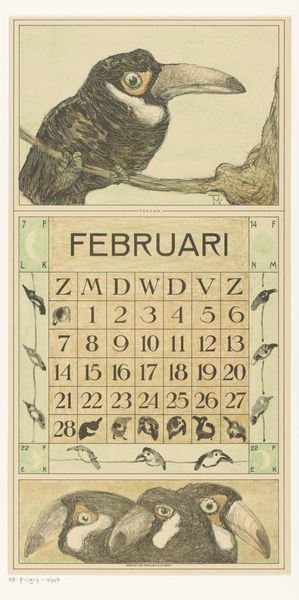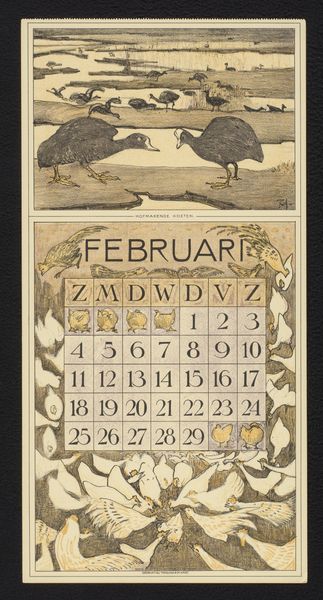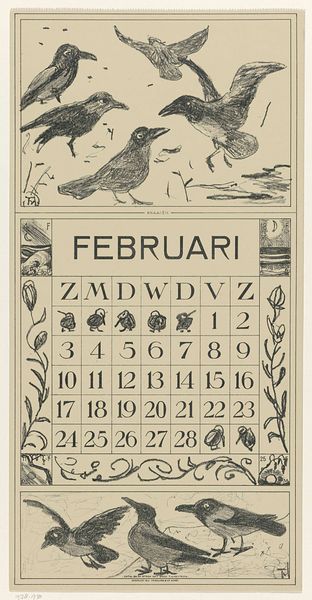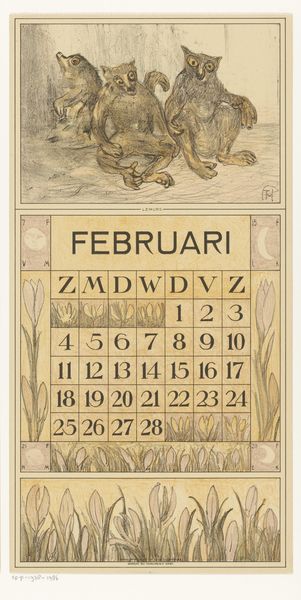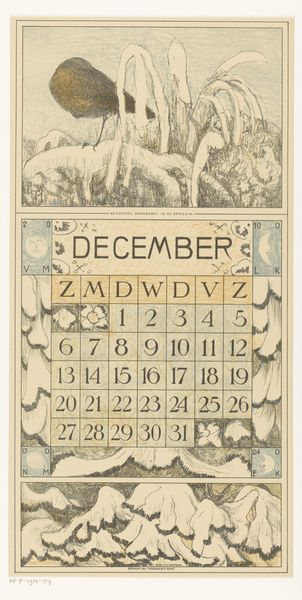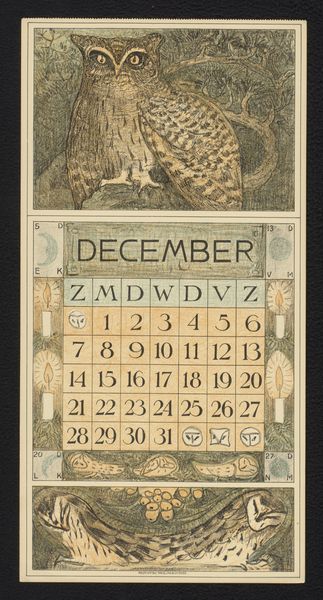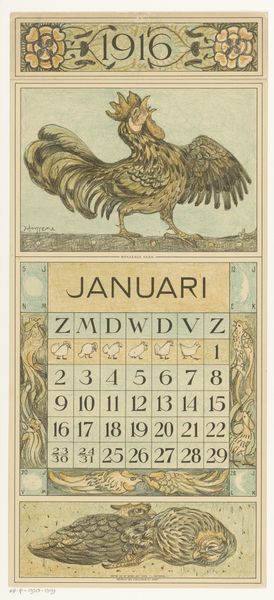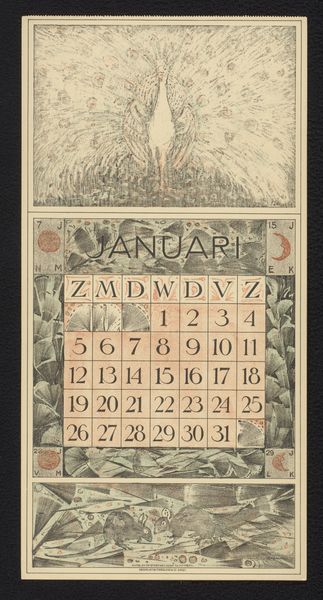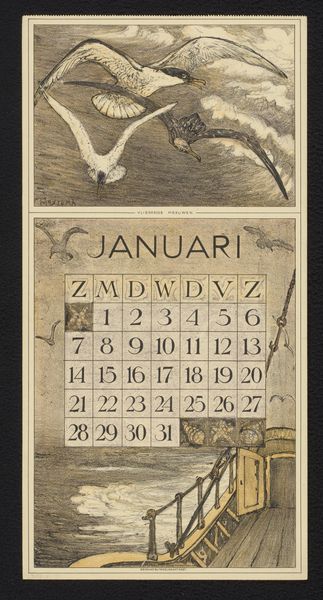
drawing, print, paper
#
drawing
#
art-nouveau
# print
#
landscape
#
paper
#
19th century
#
watercolour illustration
Dimensions: height 420 mm, width 210 mm
Copyright: Rijks Museum: Open Domain
Curator: Let's have a look at this calendar sheet by Theo van Hoytema. It’s titled "Kalenderblad februari met twee kauwen" and dates back to 1915. It employs a mix of print and drawing techniques on paper. Editor: It feels wintry, doesn’t it? Somber and yet hopeful at the same time. Those crows huddling together look for all the world like they’re sharing a secret, whispering about the first signs of spring. Curator: The materiality here is key. Notice the paper itself – its likely machine-made quality underscores the work's function as a mass-produced calendar, not merely a unique artwork. Editor: True, but look closer. The layering of colors, especially in the rendering of the birds feathers, feels really delicate and personal. I am drawn to the top panel where the birds stand so close that they touch! Curator: That positioning is so interesting. It places it in the realm of art nouveau—it draws inspiration from Japanese prints. I want to really note how the linear quality connects to a mass production technique with fine detail on show. Editor: Mass production maybe, but there is a quality I enjoy - he takes the common calendar and transforms it into a pocket-sized poem about the month. Each detail tells a story of the quiet resilience in winter. Curator: Thinking about production also allows a link into consumption and access. Consider the implications for a wider audience to experience Hoytema's art through something as utilitarian as a calendar. This creates a sense of value around how these mediums connect. Editor: So well observed! Curator: A final reflection on production: This shows a dialogue of accessibility and artistic touch. The layering brings something really evocative. Editor: For me it ends with hope of change from this wintry scene. A reminder that even in the quietest month, life continues to stir beneath the surface.
Comments
No comments
Be the first to comment and join the conversation on the ultimate creative platform.

